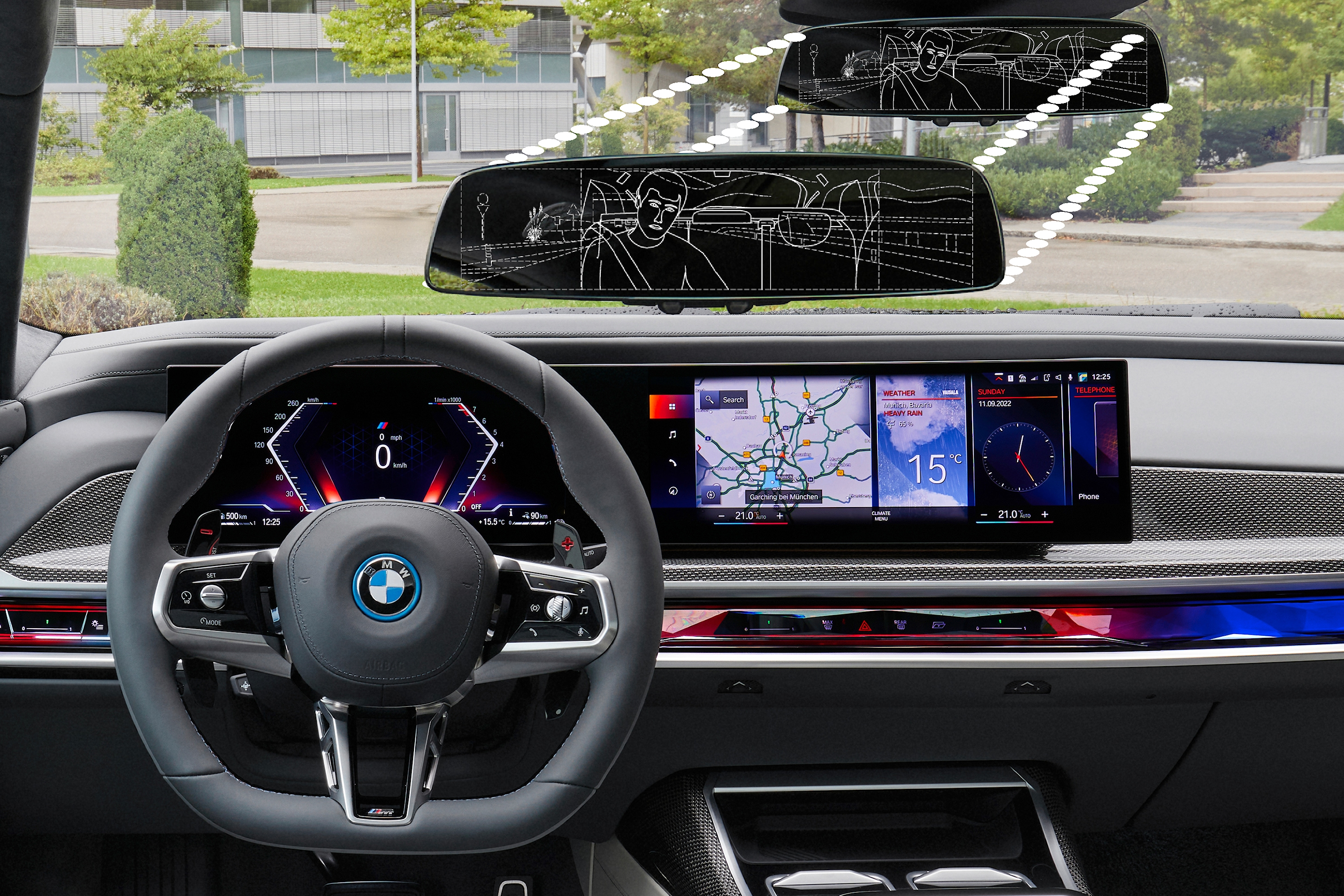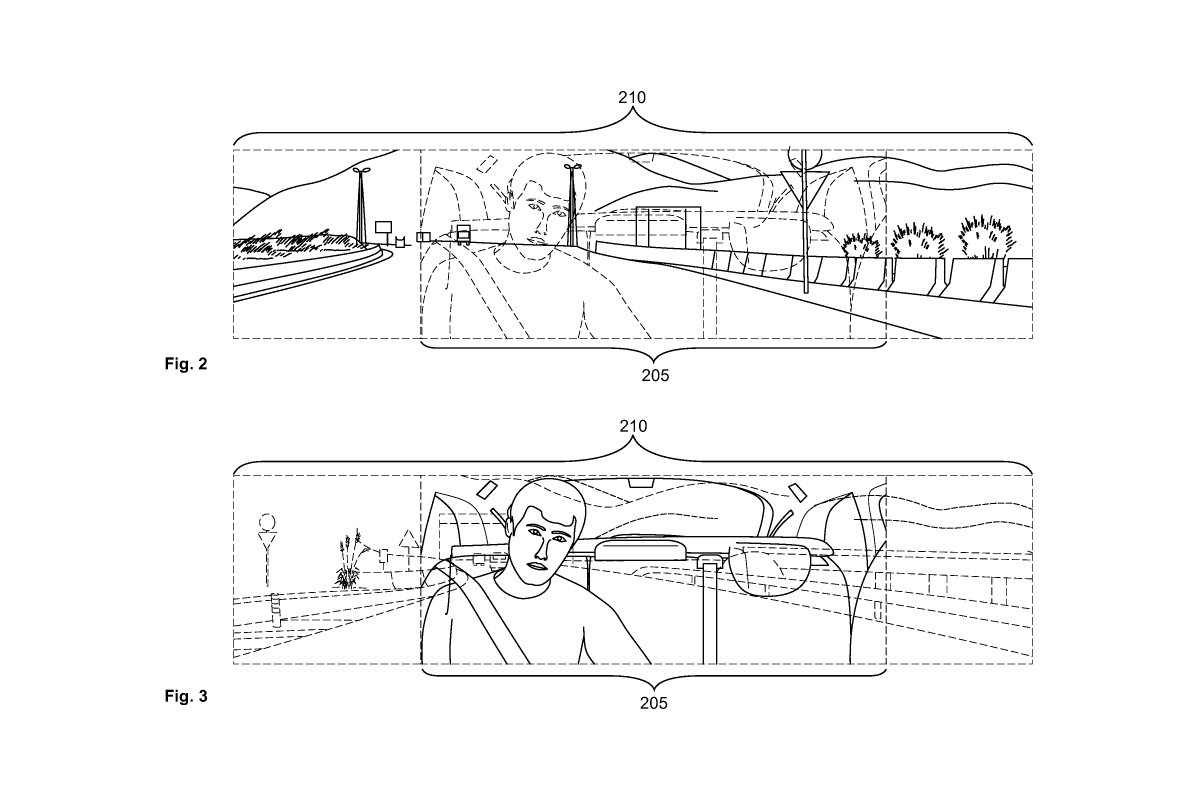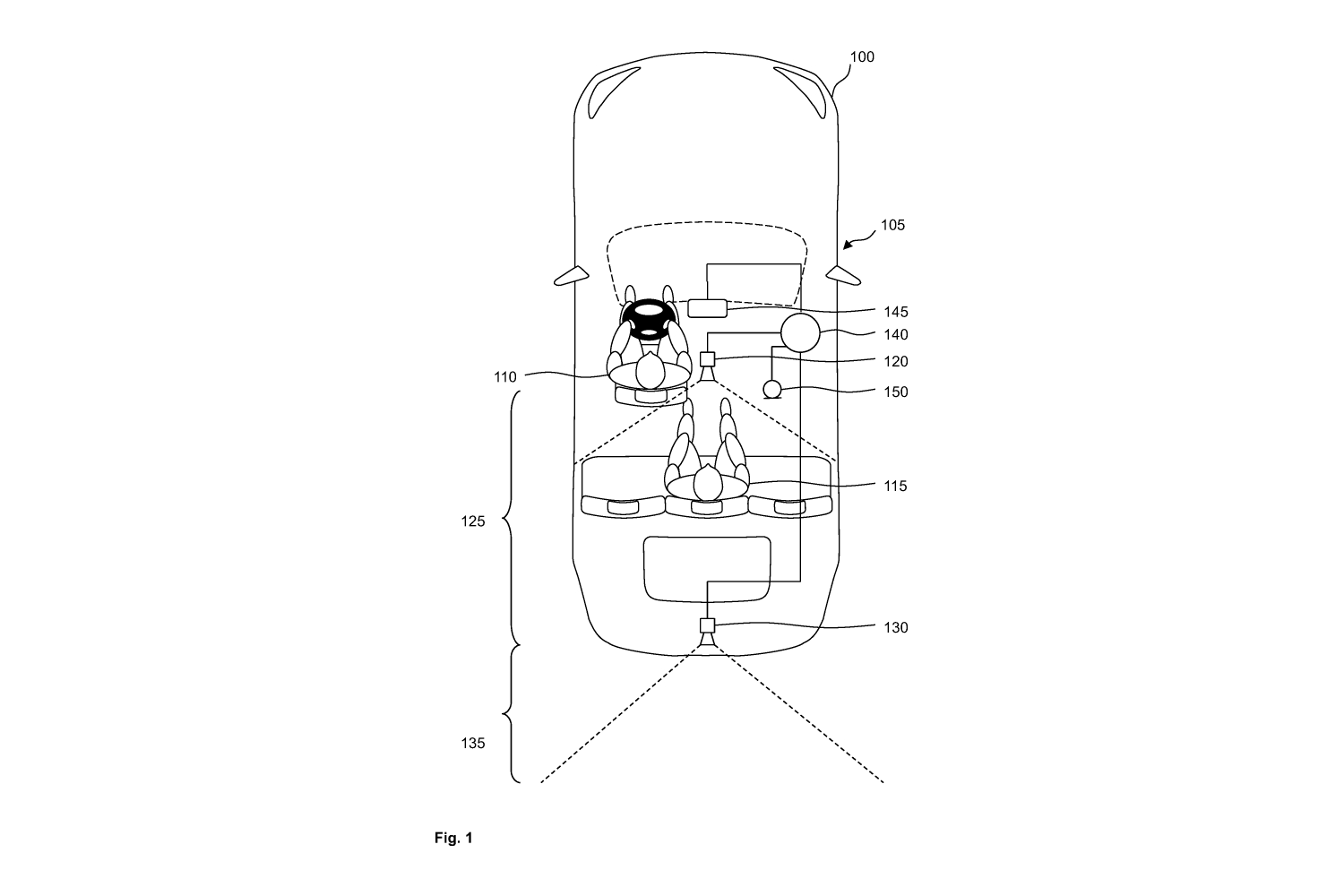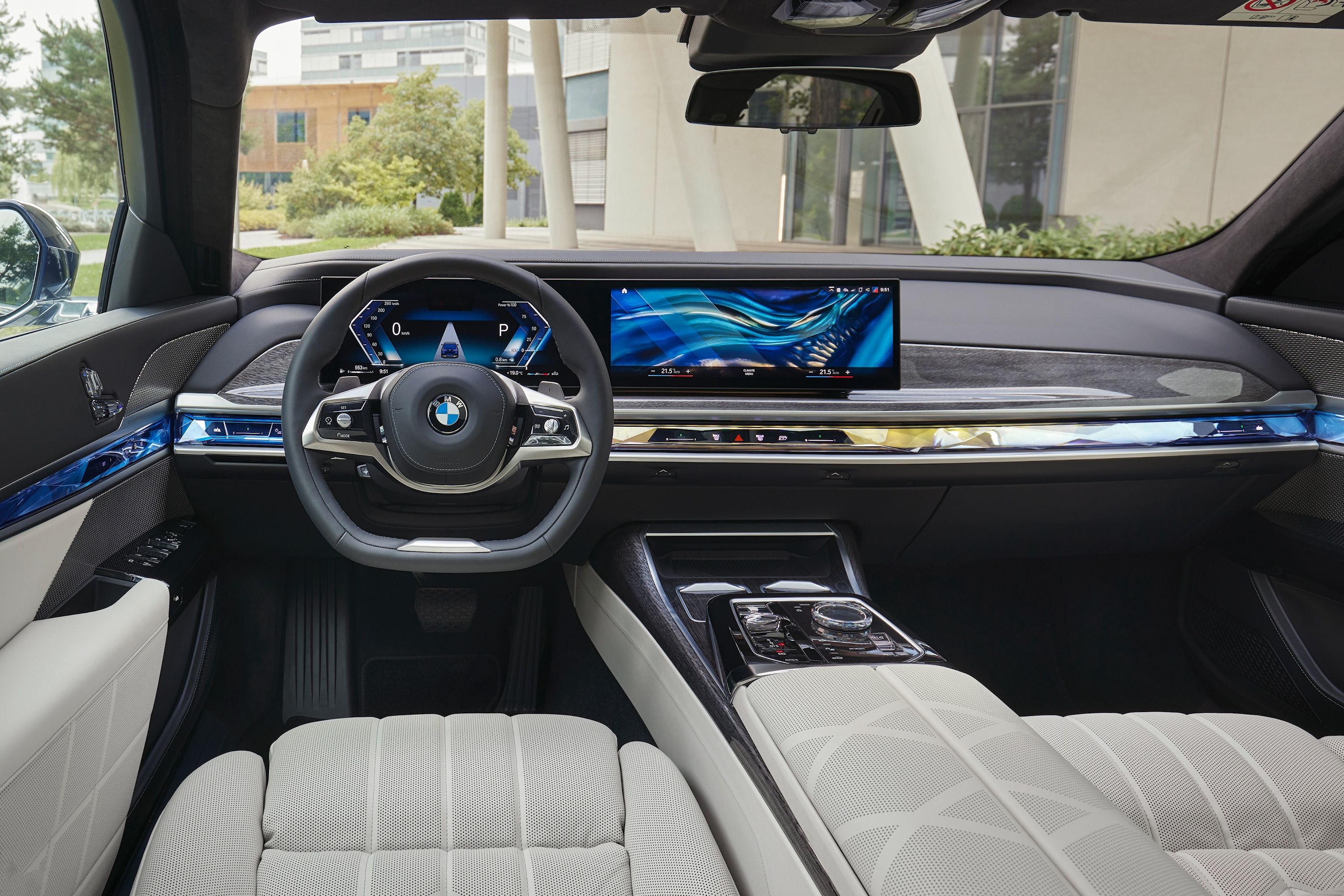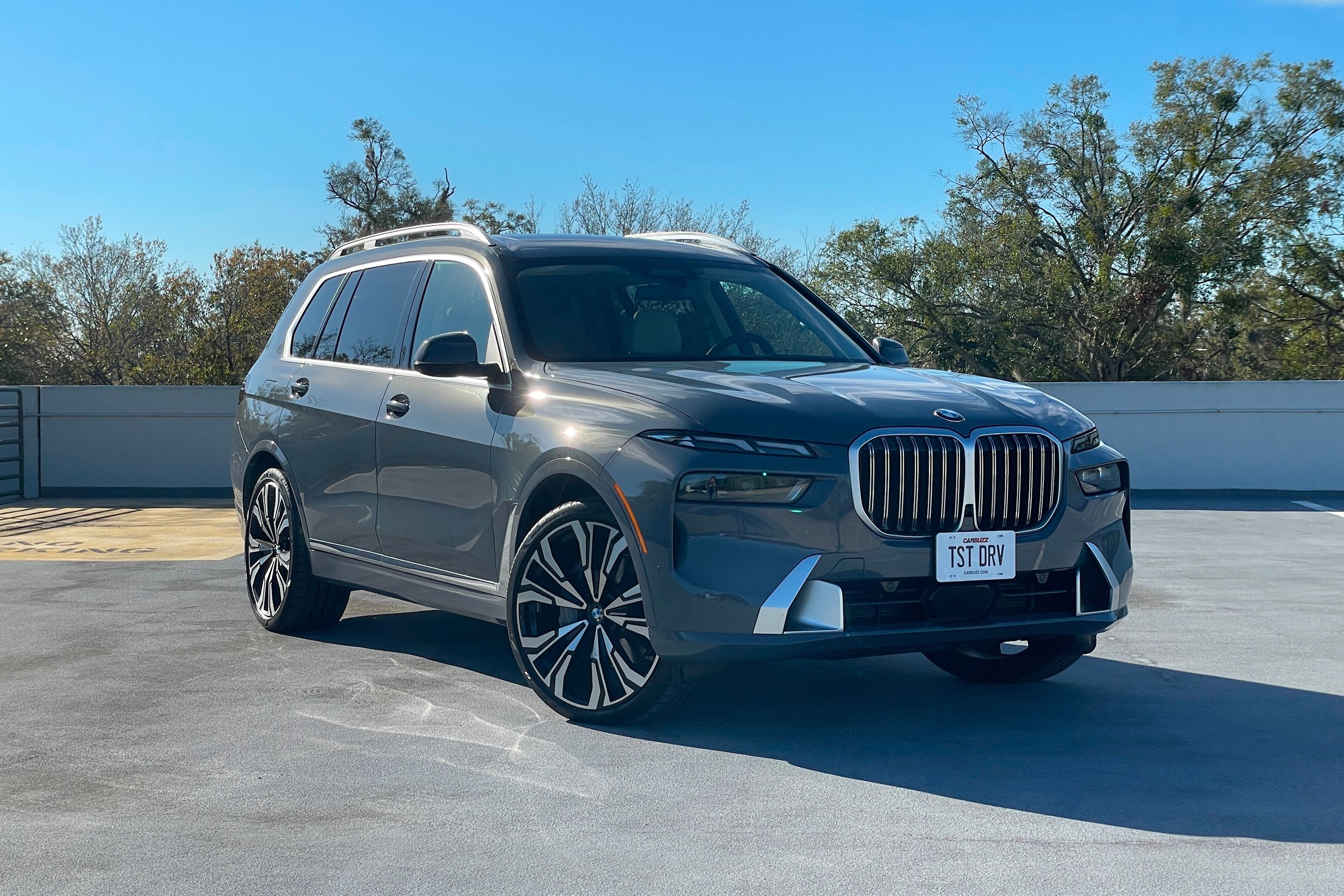
BMW has filed a patent for a multi-camera digital rearview mirror with advanced optical processing, incorporating multiple views into a single mirror-mounted display unit.
Digital rearview mirrors are nothing new in the marketplace, with some vehicles using a section of the conventional mirror to display the feed from the reverse camera. Many SUVs, such as the BMW X7, also offer the choice between the standard reflective view behind the vehicle or a fully digital image fed from external cameras, which lets you see through your rear-seat passengers. But if you want to keep a closer eye on them, you can't, and that's what BMW wants to fix with its newest invention.
A patent filed with the German Patent and Trademark Office (DPMA) and discovered by CarBuzz proposes a digital rearview mirror fed by not just one but multiple cameras, including one aimed at the rear of the cabin.
The first camera is mounted inside the vehicle in such a way that its image is largely identical to what a normal mirror would reflect if it were adjusted to show the rear seating area. The second camera is mounted outside on the vehicle's rear end and gives an image much like that of a normal rear-view camera. These two images are then processed and presented simultaneously on the rearview mirror's display.
This sounds confusing at first, but the reasoning behind it is sound. The cameras serve as primary inputs, but a host of secondary input channels enables the computer to decide which image is more pertinent to the driver. For example, occupancy sensors or microphones can augment the interior camera's output to the signal processor. Weather sensors can augment the external camera's output to detect fog, snow, or rain, and proximity sensors placed around the vehicle can detect other obstacles.
These camera and sensor outputs are fed to the image processor, which uses software logic to combine the images into a single superimposed image projected on the mirror display. Based on an analysis of the current driving conditions, the system determines which image should be displayed more prominently.
In low-speed driving, such as in dense traffic, the exterior camera's image will have priority, but if the occupancy sensors or microphones detect any change in the rear seat's occupancy, the external camera view will temporarily fade, and the interior camera view will become more visible. Conversely, if the external sensors detect the approach of a potential hazard from the rear, the internal picture will fade from the mirror display, and the exterior view will receive priority.
The system will also recognize activity on the rear seat, such as a rear-seat passenger initiating conversation with the driver. The system will bring the rear seating area into a sharper view. In this scenario, the rear microphone outputs can be played through the audio system for the driver to hear through the front speakers. The return conversation can be amplified and played to the rear-seat occupants.
Both camera views can be displayed simultaneously if configured to do so, where a human ability called 'selective perception' will filter out the irrelevant image. The camera system can also be expanded to include multiple side-facing cameras, from which the image processing unit can construct a wide-angle view to project on the mirror. Once again, the vehicle's sensors will be able to detect obstacles and make those the main display object in the mirror.
A lot of this sounds like technology simply for the sake of adding technology, but it can ease a driver's workload and highlight potential problems both inside and outside the car. The intelligent exterior-view technology is neat, but the potential for in-car communication holds the most promise for this development. Imagine a parent being able to see their child in the back seat clearly if they start making strange noises, without having to turn around and take their eyes off the road.

